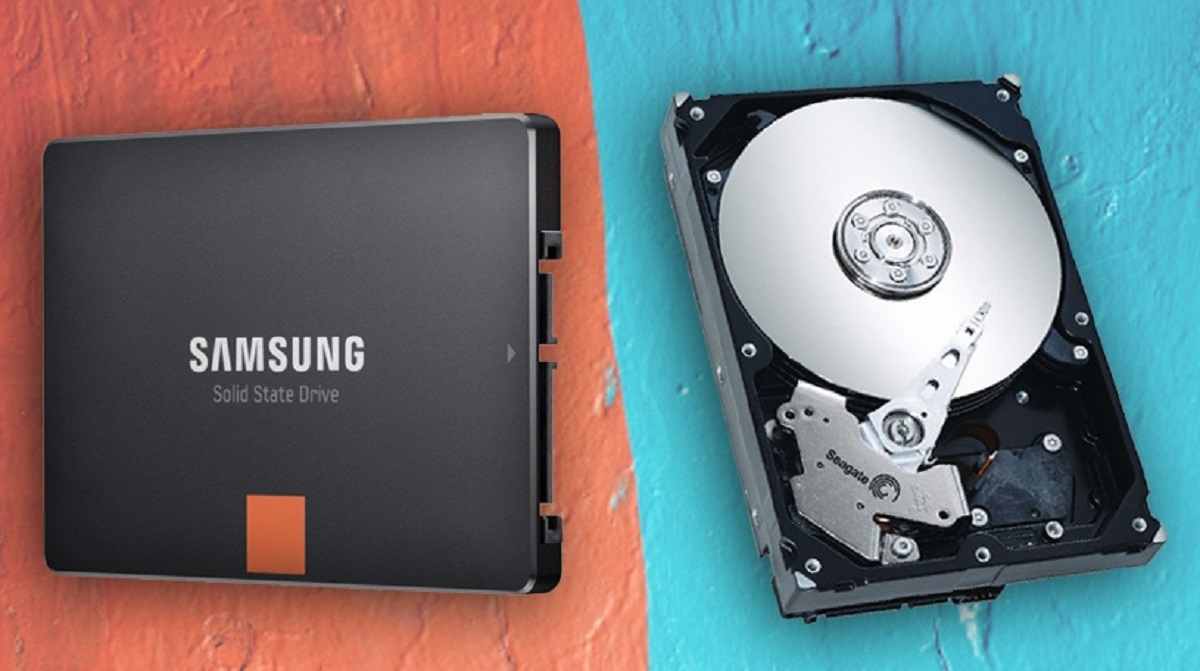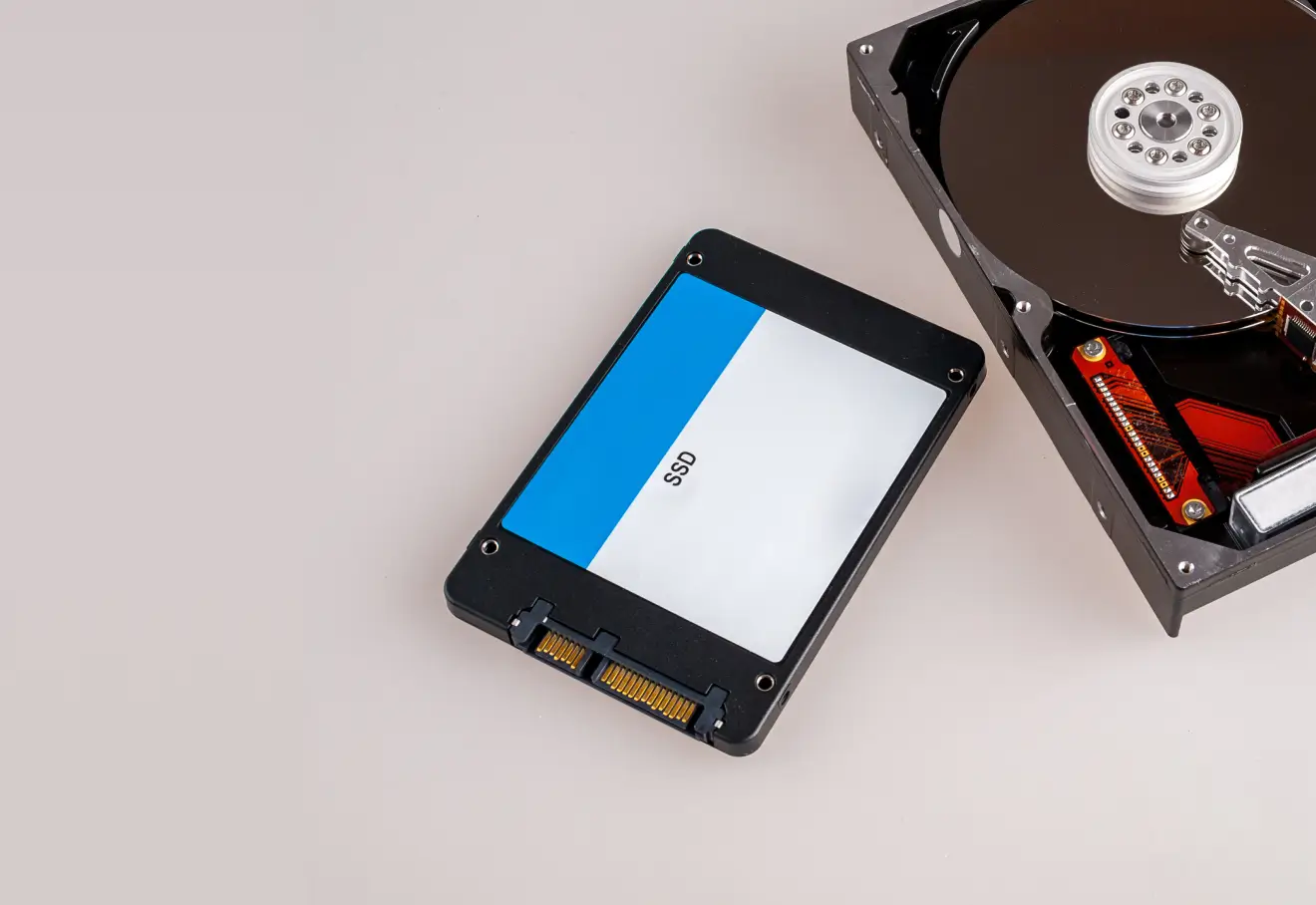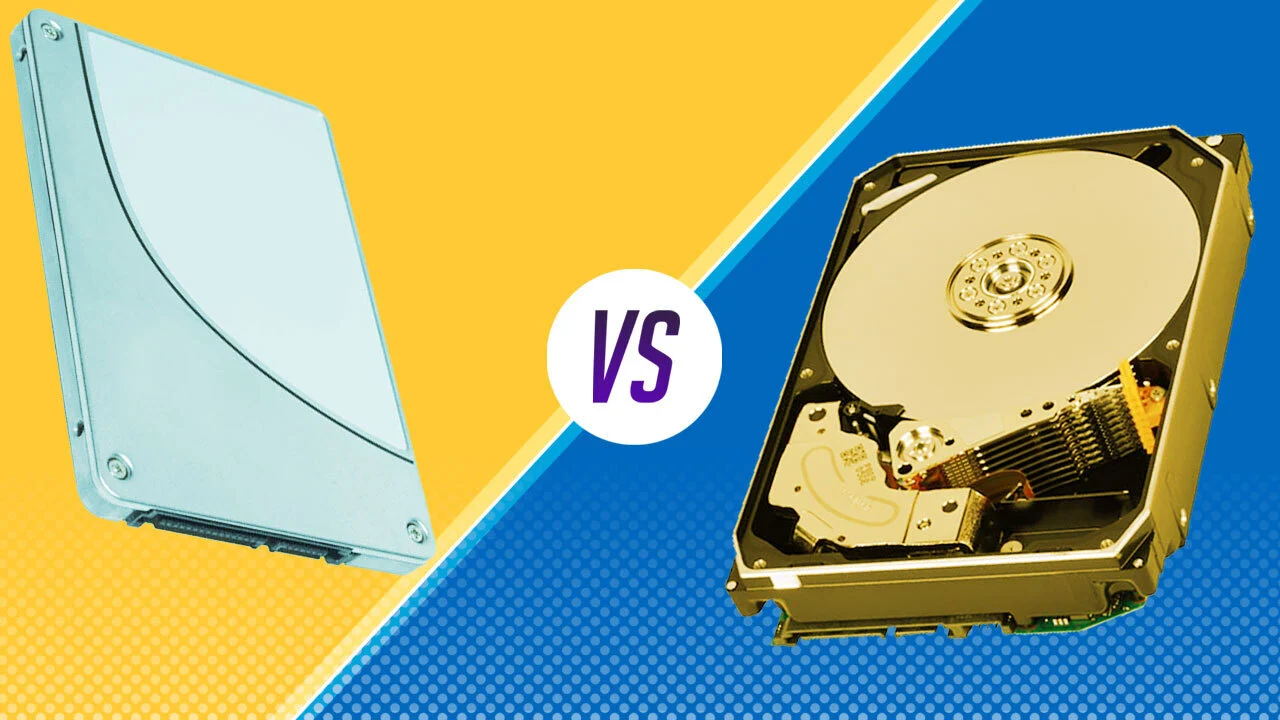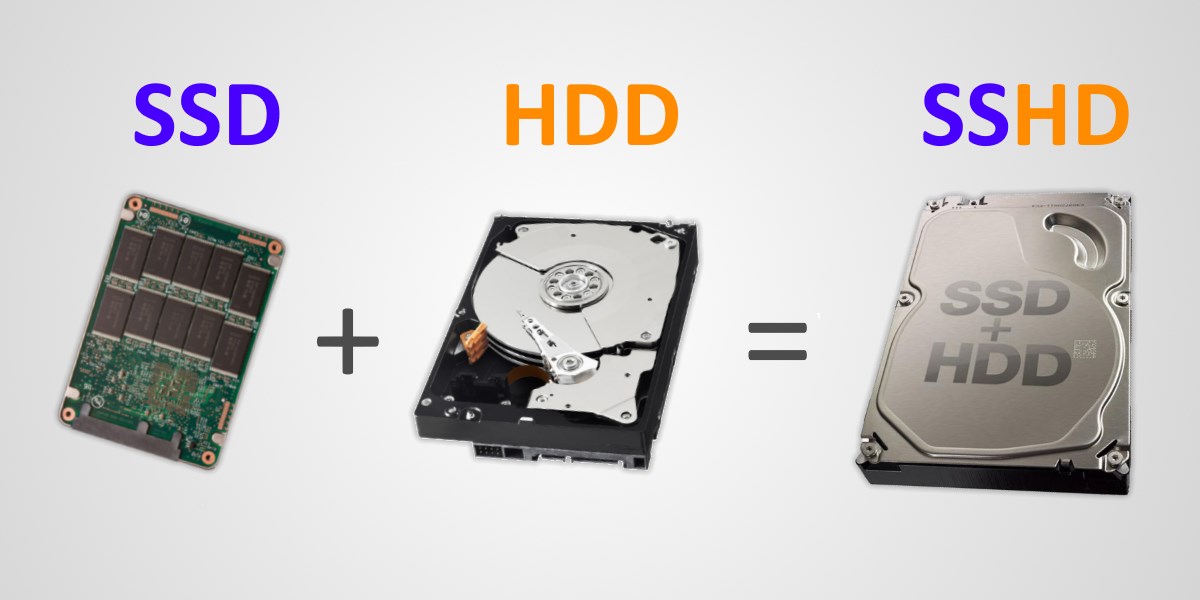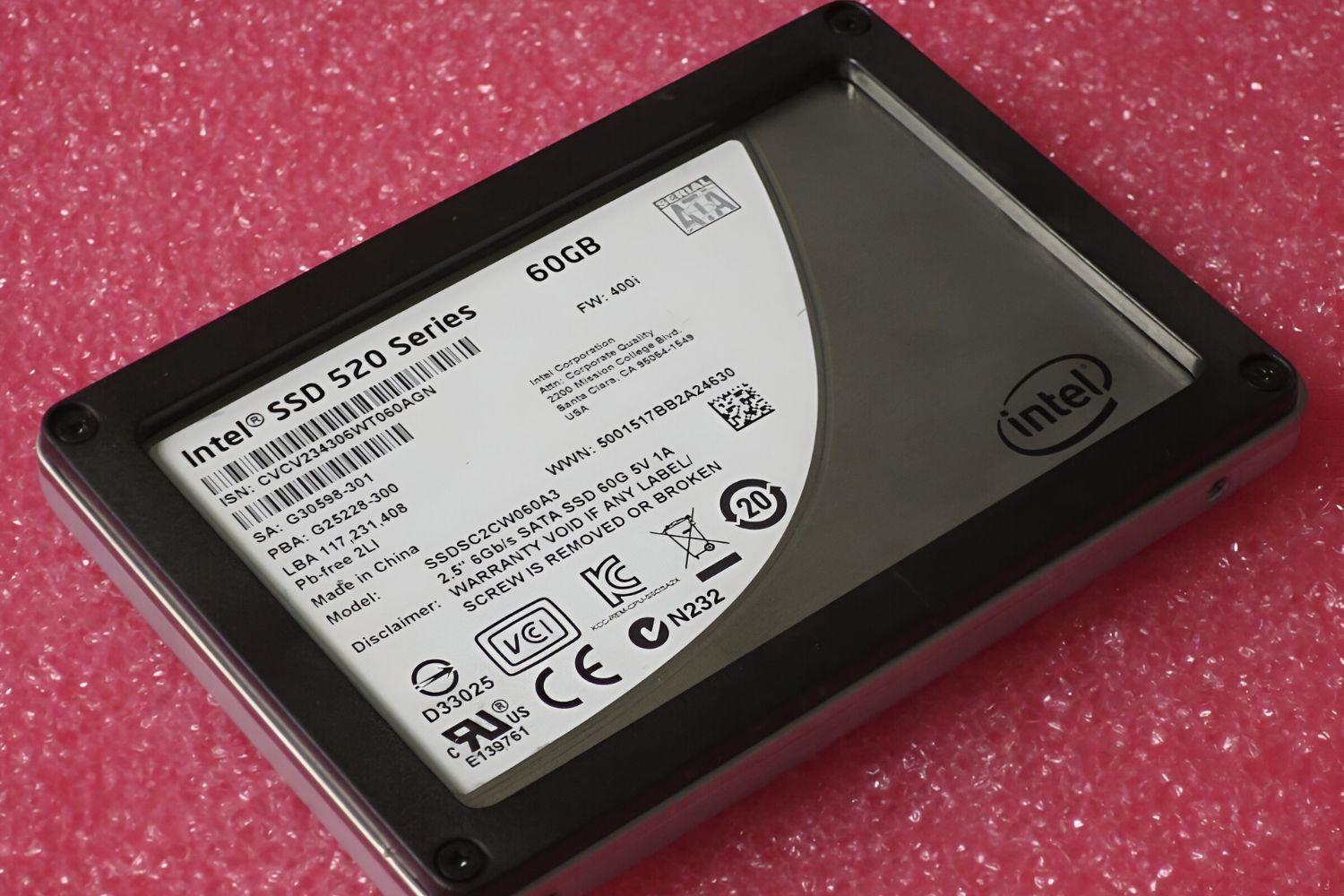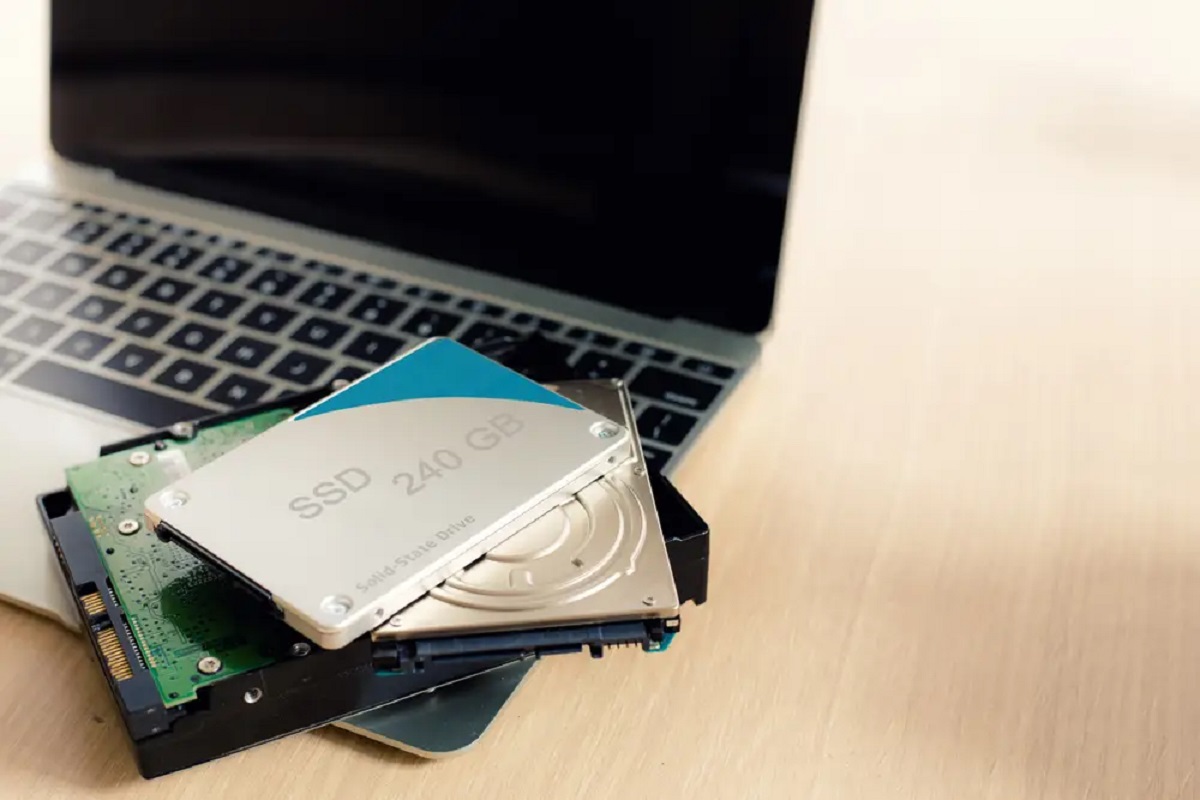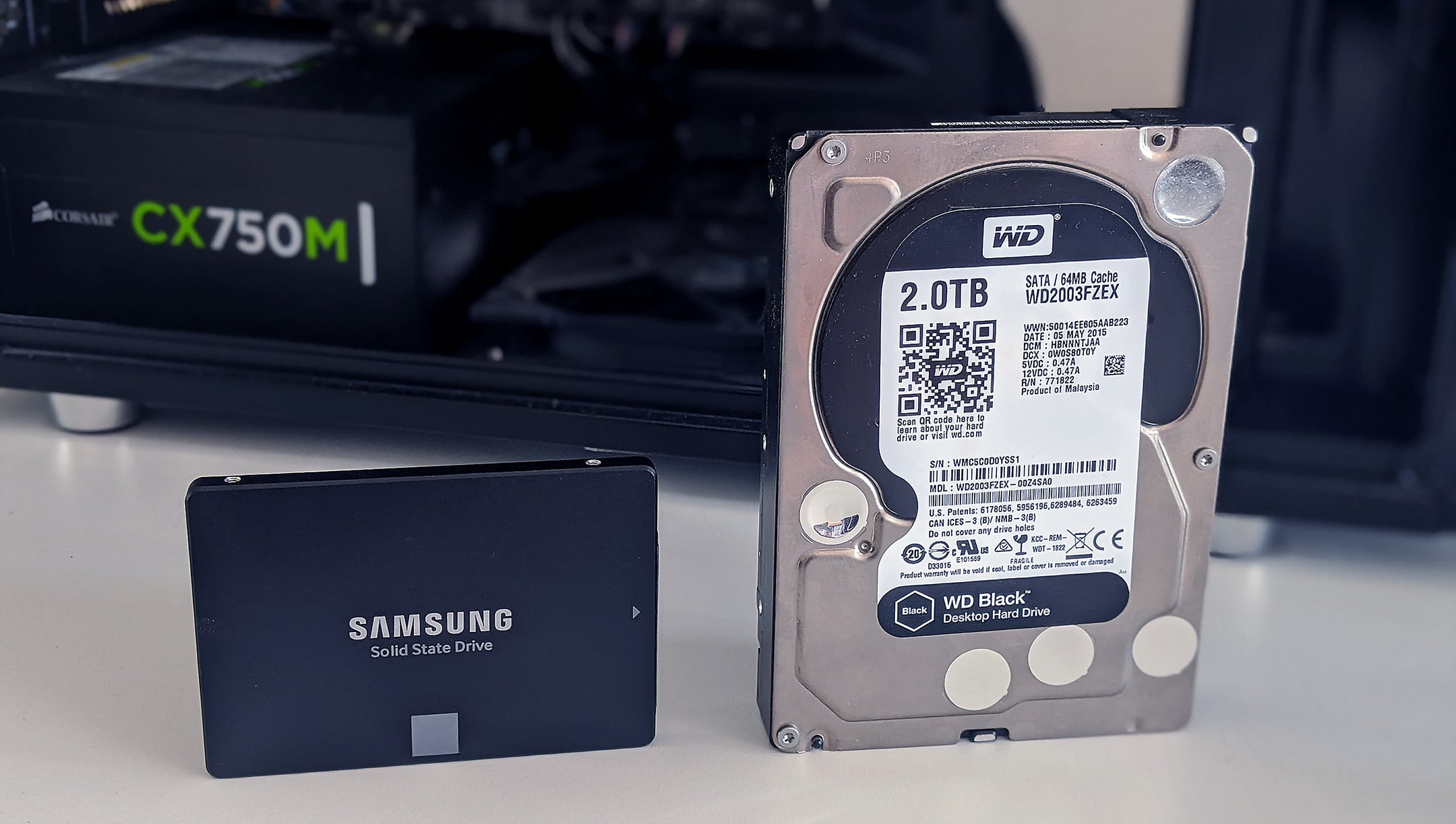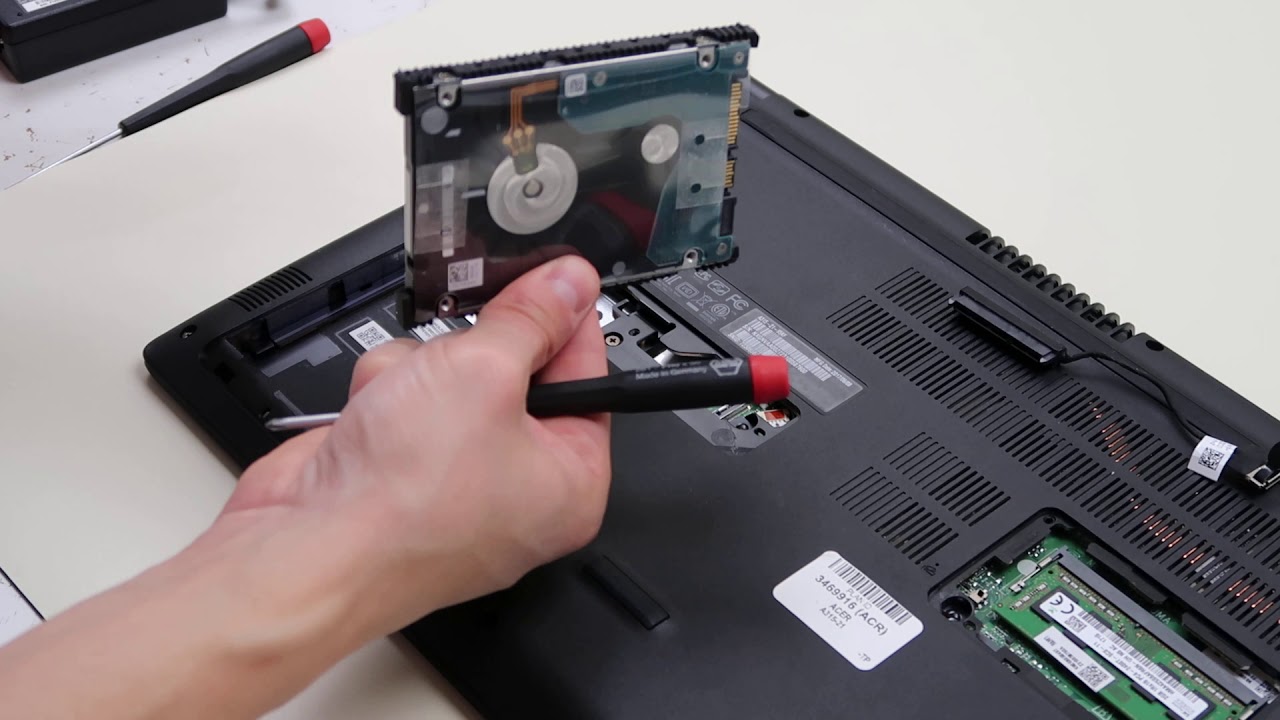Introduction
When it comes to storage options for your computer, two common choices are hard drives (HDD) and solid-state drives (SSD). Both serve the purpose of storing your data, but they have distinct differences in terms of cost, speed, reliability, lifespan, noise level, power consumption, size, and weight. Understanding these differences can help you make an informed decision about which type of drive is better suited for your needs.
The first factor to consider is cost. Hard drives have traditionally been more affordable compared to solid-state drives, especially when it comes to higher capacity drives. However, with advancements in technology and increased demand, the prices of SSDs have significantly dropped, making them more accessible to the average consumer. While HDDs still offer a cost-effective storage solution, the price gap between the two types of drives seems to be narrowing.
In terms of speed, SSDs take the lead. Solid-state drives use flash memory chips to store data, allowing for much faster read and write speeds. This results in faster boot times, quicker file transfers, and smoother overall system performance. In contrast, hard drives rely on mechanical spinning disks and moving read/write heads, which can cause slower data access speeds. If you prioritize speed and responsiveness, an SSD is the way to go.
Reliability is another factor to consider. Solid-state drives have no moving parts, which makes them less susceptible to mechanical failures. On the other hand, hard drives are prone to physical damage and mechanical issues since they rely on fragile internal components. However, it is important to note that both types of drives can still face failures due to other factors such as power surges or manufacturing defects. In terms of overall reliability, SSDs have the advantage.
The lifespan of the drives is a crucial factor, especially when it comes to long-term data storage. Hard drives typically have longer lifespans compared to SSDs. While SSDs have improved in terms of durability, they still have a limited number of write cycles before they begin to degrade. However, it is worth noting that most modern SSDs come with advanced wear-leveling technologies that evenly distribute data writes to prolong the drive’s lifespan. If you need a drive for long-term storage or heavy write-intensive tasks, a hard drive may be the more reliable option.
Noise level is a consideration for those who prefer a quiet computing environment. Hard drives generate noise due to their mechanical nature. The spinning disks and moving parts can produce audible vibrations and humming sounds when in use. In contrast, solid-state drives are completely silent as they do not have any moving parts. If noise reduction is important to you, an SSD is the better choice.
Power consumption is another factor that sets the two drives apart. Solid-state drives consume less power compared to hard drives. This is because SSDs do not require additional energy to spin disks and move read/write heads. Consequently, using an SSD can result in lower electricity bills and longer battery life for laptops and portable devices.
Size and weight are essential considerations, particularly for those seeking compact and portable solutions. Solid-state drives are much smaller and lighter compared to hard drives. This makes them ideal for slim laptops, ultrabooks, and other portable devices where space is limited. On the other hand, hard drives are larger and heavier due to their mechanical components. If portability is a priority, SSDs are the clear winner in terms of size and weight.
Cost
One of the primary factors to consider when choosing between a hard drive (HDD) and a solid-state drive (SSD) is cost. Historically, hard drives have been more affordable compared to SSDs, especially when it comes to higher-capacity storage options. This affordability has made hard drives the go-to choice for many budget-conscious consumers.
However, with advancements in technology and increased demand for SSDs, the prices have significantly dropped in recent years. While SSDs are still generally more expensive than hard drives, the price gap between the two has been closing. This means that SSDs, which were once considered a luxury option, have become more accessible to consumers with varying budgets.
When considering cost, it is important to think about your storage needs. If you require a large amount of storage space, hard drives will typically offer a more cost-effective solution. Hard drives can provide terabytes of storage space at a relatively low cost per gigabyte. This makes them ideal for users who have a large multimedia library or need ample space for data-intensive tasks like video editing or gaming.
On the other hand, if you prioritize speed and performance over sheer storage capacity, investing in an SSD may be a wise choice. SSDs use flash memory chips to store data, which allows for lightning-fast read and write speeds. These speed advantages can result in significantly improved system performance, faster boot times, and quicker file transfers. For users who require high-speed storage for applications like video editing, graphic design, or professional gaming, the performance benefits of an SSD outweigh the higher cost.
Additionally, it is worth mentioning that the cost of SSDs has been steadily decreasing over time. As technological advancements continue and manufacturing processes become more efficient, SSD prices are expected to continue their downward trend. This means that the cost gap between hard drives and SSDs will likely continue to narrow, making SSDs a more attractive option for a wider range of consumers.
Ultimately, the choice between a hard drive and an SSD comes down to balancing your specific storage needs and budget. If you prioritize cost-effective storage and require a large capacity, a hard drive is the more economical option. However, if you value speed, performance, and are willing to invest a bit more, an SSD can provide a significant boost in overall system responsiveness and file access times.
Speed
When it comes to storage solutions, one of the key factors to consider is speed. The speed of a storage drive can have a significant impact on overall system performance and user experience. In this regard, solid-state drives (SSDs) outshine hard drives (HDDs) in terms of speed and responsiveness.
SSDs utilize flash memory technology, which allows for near-instantaneous data access. Unlike HDDs, which rely on mechanical components, SSDs have no moving parts. This lack of physical movement means that data retrieval and transfer speeds are significantly faster with an SSD. Whether you’re booting up your system, launching applications, or accessing large files, the speed benefits of an SSD are undeniable.
One of the areas where SSDs excel is in boot times. An SSD can drastically reduce the time it takes for your computer to start up. With an HDD, the mechanical nature of the drive results in longer boot times as it requires time to spin up the disks and position the read/write heads. In contrast, an SSD can boot up your system in a matter of seconds, leading to a smoother and more efficient user experience.
File transfers are another area where the speed advantage of SSDs becomes apparent. Whether you’re copying large multimedia files, moving data between drives, or performing backups, an SSD can significantly reduce the wait time associated with file transfers. The fast read and write speeds of an SSD allow for swift and seamless data transfer, saving you valuable time and increasing productivity.
Furthermore, SSDs excel in tasks that involve random access to data, such as opening multiple applications simultaneously or searching for specific files. The fast and consistent access times offered by SSDs make multitasking a breeze and result in a more responsive computing experience.
In contrast, hard drives, with their mechanical components, are limited in terms of speed. The spinning disks and moving read/write heads of an HDD introduce latency, causing slower data access speeds. This can lead to longer load times for applications and files, and a generally slower overall system performance.
It is important to note that while SSDs offer significant speed advantages, the actual speed may vary depending on various factors such as the specific model of the SSD, the type of interface used (e.g., SATA or NVMe), and the system configuration. However, in general, SSDs provide a marked improvement in speed and responsiveness compared to traditional hard drives.
In summary, if you prioritize speed and performance, investing in an SSD is a wise choice. The lightning-fast read and write speeds, coupled with reduced boot times and faster file transfers, can greatly enhance your overall computing experience. While hard drives still offer ample storage capacity, their slower access speeds make them a less optimal choice for tasks that require speed and responsiveness.
Reliability
When it comes to choosing a storage drive, reliability is a crucial factor to consider. The reliability of a drive determines its ability to retain and safeguard your data over time. In this regard, solid-state drives (SSDs) have a clear advantage over hard drives (HDDs) in terms of reliability.
One of the primary reasons for the difference in reliability between SSDs and HDDs lies in their design. SSDs have no moving parts, while HDDs rely on spinning disks and moving read/write heads. This mechanical nature of hard drives makes them more susceptible to physical damage and mechanical failures. The spinning disks can suffer from scratches, while the read/write heads can become misaligned or damaged, leading to data integrity issues.
In contrast, SSDs have a more robust design. Since they do not rely on any mechanical components, they are less prone to physical damage. This means that SSDs can withstand more shock and vibrations without impacting their performance or data integrity. If you accidentally drop a device equipped with an SSD, the chances of data loss or drive failure are significantly lower compared to a device with an HDD.
Moreover, the lack of moving parts in SSDs contributes to their silent operation. HDDs, with their spinning disks, generate noise and vibrations during normal operation. These vibrations can potentially affect the delicate internal components of the hard drive and lead to failures over time. SSDs, on the other hand, operate silently, making them an ideal choice for users who prioritize a quiet computing environment.
Another aspect that contributes to the reliability of SSDs is their resistance to temperature extremes. Unlike HDDs, which can be more sensitive to temperature fluctuations, SSDs can operate within a wider temperature range. This means that they are less likely to suffer from temperature-related malfunctions or data corruption. Additionally, SSDs have a lower power consumption, resulting in less heat generation during operation, further enhancing their reliability.
While SSDs have clear advantages in terms of reliability, it is worth noting that both types of drives can still face failures due to other factors such as power surges, manufacturing defects, or even user errors. No storage drive is completely immune to failure. However, overall, SSDs offer a higher level of reliability and durability compared to HDDs.
It is important to back up your data regularly regardless of the type of drive you choose. By maintaining a backup of your important files, you can protect yourself against the potential failure of any storage device. Whether you choose an SSD or an HDD, a regular backup routine is essential to ensure the safety and accessibility of your data.
In summary, SSDs provide enhanced reliability compared to HDDs due to their lack of moving parts and their ability to withstand physical shock, temperature extremes, and user errors. While no drive is immune to failure, investing in an SSD can offer greater peace of mind when it comes to the long-term reliability and integrity of your valuable data.
Lifespan
When considering a storage drive for your computer, the lifespan of the drive is an important factor to evaluate. Understanding the lifespan of a drive can help determine its longevity and how long it will reliably store your data. While both hard drives (HDDs) and solid-state drives (SSDs) can effectively store your files, there are differences in their lifespan that should be taken into account.
In general, hard drives tend to have longer lifespans compared to SSDs. The traditional mechanical design of hard drives allows them to endure a large number of read and write cycles without experiencing significant degradation. This makes hard drives a reliable option for long-term data storage, especially in scenarios that involve heavy use or constant writing and rewriting of data.
However, it’s important to note that hard drives do have their limits. Over time, the mechanical components of a hard drive can wear out, resulting in degraded performance or the potential for data loss. Factors such as temperature fluctuations, power surges, and physical shock can all contribute to the eventual failure of a hard drive. Therefore, it is advisable to regularly back up the data stored on a hard drive to ensure its safety and accessibility.
On the other hand, solid-state drives have a different kind of lifespan. SSDs rely on flash memory technology to store data, and this technology comes with a finite number of write cycles. As data is written and erased on an SSD, the integrity of the flash memory cells can gradually degrade. However, modern SSDs incorporate advanced wear-leveling algorithms, which distribute data writes evenly across the drive to mitigate the effects of this degradation. This helps to prolong the lifespan of the SSD and ensure a longer usable lifespan.
While SSDs do have a limited lifespan in terms of write cycles, it’s essential to note that the typical usage scenario for consumer-grade SSDs involves several years of regular use before reaching this limit. For the average user who employs an SSD for everyday tasks like web browsing, document editing, and media consumption, the lifespan of an SSD is likely to exceed the lifespan of the device itself. Furthermore, SSD manufacturers often offer warranties that cover the drive for a specified number of years or for a certain amount of data written, providing an additional level of assurance.
In summary, hard drives generally have longer lifespans compared to SSDs due to their mechanical design and ability to withstand a high number of read and write cycles. However, modern SSDs have advanced wear-leveling technology that extends their lifespan and makes them a reliable choice for everyday use. Regardless of the type of drive chosen, it is crucial to regularly back up your files to ensure their safety and minimize the risk of data loss.
Noise Level
When considering storage options for your computer, the noise level of the drive is an important factor to take into account. The noise generated by a drive can have an impact on the overall user experience, particularly for those who prefer a quiet computing environment. In this regard, solid-state drives (SSDs) have a distinct advantage over hard drives (HDDs) as they operate completely silently.
Hard drives, with their mechanical nature, produce noise during normal operation. The spinning disks and moving read/write heads generate audible vibrations and humming sounds. These noises can be noticeable, particularly in quiet environments or when the drive is under heavy use. The constant noise can be distracting and may interrupt concentration, especially for those engaging in activities that require a noise-free environment such as audio recording or content creation.
In contrast, solid-state drives have no moving parts and, therefore, produce no noise during operation. The absence of mechanical components eliminates any audible vibrations or humming sounds. This makes SSDs the ideal choice for those who value a silent computing experience. Whether you’re working in a noise-sensitive environment or simply prefer a quieter workspace, an SSD offers a noise-free storage solution.
The noise level of a hard drive can also vary depending on factors such as disk rotation speed and the location of the drive within your computer. Drives that operate at higher rotation speeds tend to generate more noise. Therefore, if noise reduction is a priority, it may be beneficial to choose a hard drive with a lower rotation speed. Additionally, selecting a drive that mounts securely within your computer or using noise-dampening mounting accessories can help minimize any vibrations and further reduce noise levels.
Another advantage of SSDs when it comes to noise is their resistance to wear and tear. As hard drives age, they may start producing additional noise due to mechanical components becoming worn or misaligned. This can further add to the noise level and potentially become a nuisance. Since SSDs do not have moving parts, they are not subject to the same wear and tear, ensuring that they maintain their noise-free operation for a longer period of time.
In summary, when it comes to noise level, solid-state drives (SSDs) are the superior choice over hard drives (HDDs) as they operate silently. HDDs, with their mechanical components, generate audible vibrations and humming sounds. SSDs, on the other hand, produce no noise during operation, providing a quiet and distraction-free computing experience. If noise reduction is important to you, an SSD is the optimal choice for storage.
Power Consumption
Power consumption is a significant consideration when choosing a storage drive for your computer, especially for those using laptops or portable devices. Both hard drives (HDDs) and solid-state drives (SSDs) differ in terms of their power requirements, with SSDs being more efficient in this regard.
Hard drives rely on mechanical components to read and write data. These mechanical parts, such as spinning disks and moving read/write heads, require a continuous supply of power to operate. As a result, hard drives tend to consume more power compared to SSDs. The power drawn by a hard drive can vary depending on its rotation speed and workload. Higher rotational speeds lead to increased power consumption.
In contrast, solid-state drives have no moving parts and rely on flash memory technology to store data. The absence of mechanical components significantly reduces power requirements. SSDs consume considerably less power during both idle and active states. This not only results in lower electricity bills but also contributes to enhanced battery life in laptops and other portable devices.
The power efficiency of SSDs is particularly advantageous for those who use laptops or other battery-powered devices. By opting for an SSD, your device’s battery can last longer, allowing for extended productivity and less frequent charging. Additionally, the lower power consumption of SSDs results in less heat generation, which can contribute to better overall system stability and longevity.
It is worth noting that hard drives still play a role in storage solutions where power consumption is less of a concern. In scenarios where high capacity storage is required and power efficiency is not a top priority, hard drives can provide a suitable and cost-effective solution.
Some modern hard drives have introduced power saving features, such as the ability to spin down or enter low-power modes when not in use. However, even with these features, the power consumption of hard drives still tends to be higher compared to SSDs during both active and idle states.
In summary, solid-state drives (SSDs) are more power-efficient compared to hard drives (HDDs) due to their lack of moving parts. SSDs consume significantly less power during both active and idle states, leading to lower electricity bills and longer battery life in portable devices. This power efficiency makes SSDs an attractive choice for those who prioritize longer battery life and reduced environmental impact.
Size and Weight
For those seeking compact and portable storage solutions, the size and weight of a storage drive are important considerations. When comparing hard drives (HDDs) and solid-state drives (SSDs), SSDs come out on top in terms of size and weight.
SSDs have a distinct advantage when it comes to size. Their design utilizes compact circuitry and flash memory chips, resulting in significantly smaller physical dimensions compared to HDDs. This makes SSDs ideal for slim laptops, ultrabooks, and other devices where space is a premium. The smaller size of SSDs allows for more flexibility in designing and manufacturing devices, enabling sleek and lightweight designs.
Not only are SSDs smaller in size, but they are also significantly lighter compared to hard drives. Since SSDs have no moving parts, they require fewer internal components, resulting in a reduced overall weight. This weight reduction is particularly important for those who value portability and need to carry their devices on-the-go. The lighter weight of SSDs makes them ideal for individuals who travel frequently, students, or professionals who often work remotely.
In contrast, hard drives are bulkier and heavier due to their mechanical components. The spinning disks and moving read/write heads add both physical size and weight to the drive. While hard drives still fit conveniently in larger desktop computers or workstations, they can be a limiting factor when it comes to designing smaller and more portable devices.
The smaller size and lighter weight of SSDs not only contribute to portability but also have other advantages. For example, in devices such as laptops or tablets, the reduced weight of an SSD can lead to improved ergonomics and increased comfort during prolonged periods of use. The lightweight nature of SSDs also puts less stress on the device’s internal structure and improves overall durability.
It is worth mentioning that there are varying sizes and form factors available for both HDDs and SSDs. Traditional 2.5-inch HDDs and SATA-based SSDs are commonly found in laptops and desktops. However, smaller M.2 SSDs have gained popularity due to their compact size and high-speed performance. The availability of different sizes and form factors allows for flexibility in choosing the most suitable drive for your specific device and storage needs.
In summary, solid-state drives (SSDs) have a clear advantage over hard drives (HDDs) when it comes to size and weight. The compact design and lightweight nature of SSDs make them the preferred choice for those seeking slim, portable devices. The smaller size and reduced weight not only contribute to enhanced portability but also provide added comfort and improved durability.
Conclusion
When it comes to choosing between a hard drive (HDD) and a solid-state drive (SSD), there are several factors to consider. Both types of drives have their own advantages and disadvantages, and the choice ultimately depends on your specific needs and priorities.
Hard drives have long been the go-to choice for many due to their affordability and large storage capacities. They are reliable for long-term data storage and are well-suited for tasks that require ample space but don’t necessarily rely on lightning-fast speed or high-performance capabilities. Hard drives are still a viable option, particularly for users with budget constraints or those who require significant amounts of storage for multimedia libraries or data-intensive applications.
On the other hand, if you prioritize speed, performance, and overall system responsiveness, solid-state drives are the superior choice. SSDs boast faster boot times, quicker file transfers, and smoother overall performance compared to hard drives. They are particularly beneficial for those who work with resource-intensive tasks such as video editing, graphic design, or gaming. Additionally, SSDs offer advantages in terms of reliability, as they lack the mechanical components that can be prone to failure in hard drives.
Size and weight are also factors to consider, especially for individuals who require a portable or lightweight solution. SSDs are significantly smaller and lighter compared to HDDs, making them ideal for slim laptops, ultrabooks, and other compact devices. The reduced weight of SSDs contributes to enhanced portability and improved ergonomics.
While SSDs have shown advancements in terms of cost-effectiveness, they are still generally more expensive than hard drives, especially for higher-capacity options. Hard drives continue to provide a cost-effective solution for those who require large amounts of storage without the need for high-speed performance.
In conclusion, the choice between a hard drive and a solid-state drive depends on your priorities regarding factors such as speed, reliability, size, weight, and cost. If speed, performance, and portability are crucial to you, investing in an SSD is recommended. However, if you prioritize cost-effectiveness and need large storage capacities, a hard drive remains a reliable option. Consider your specific needs, budget, and intended use cases to make an informed decision between these two storage technologies.







